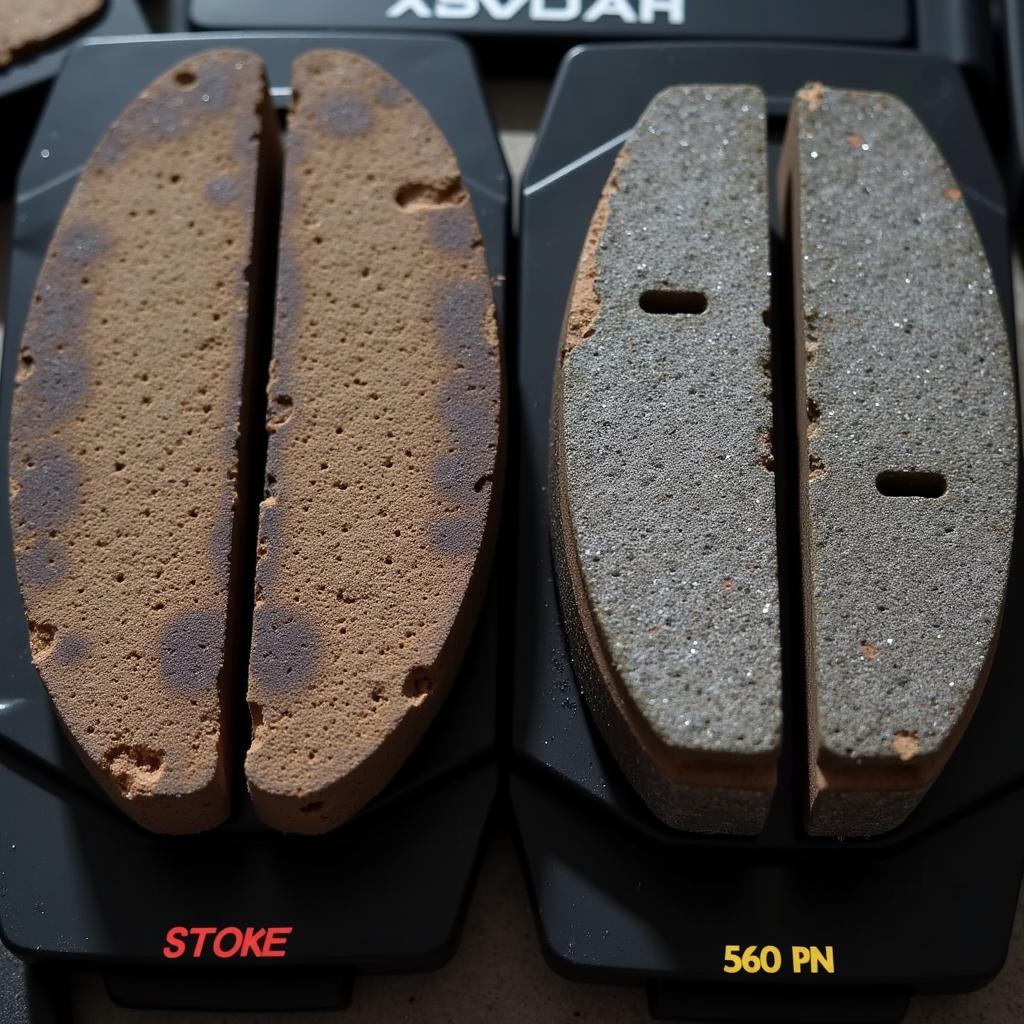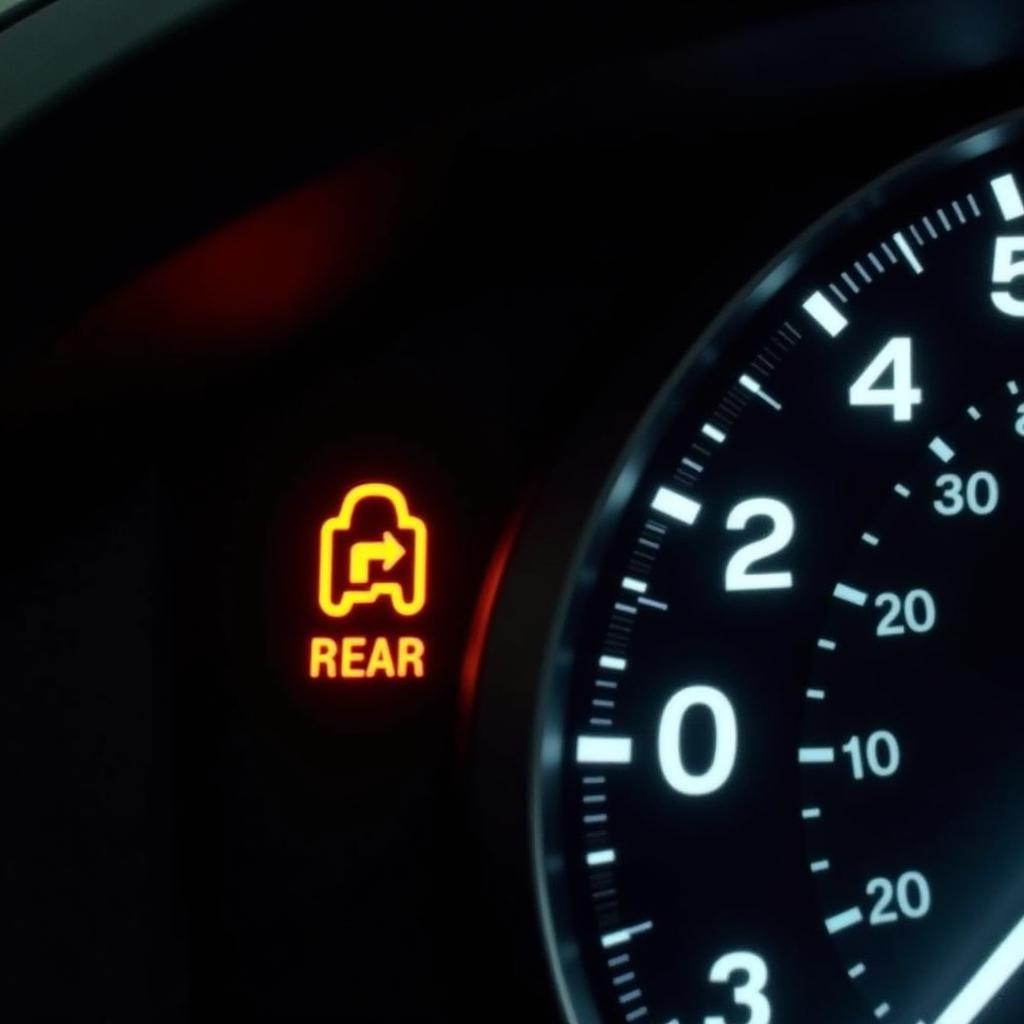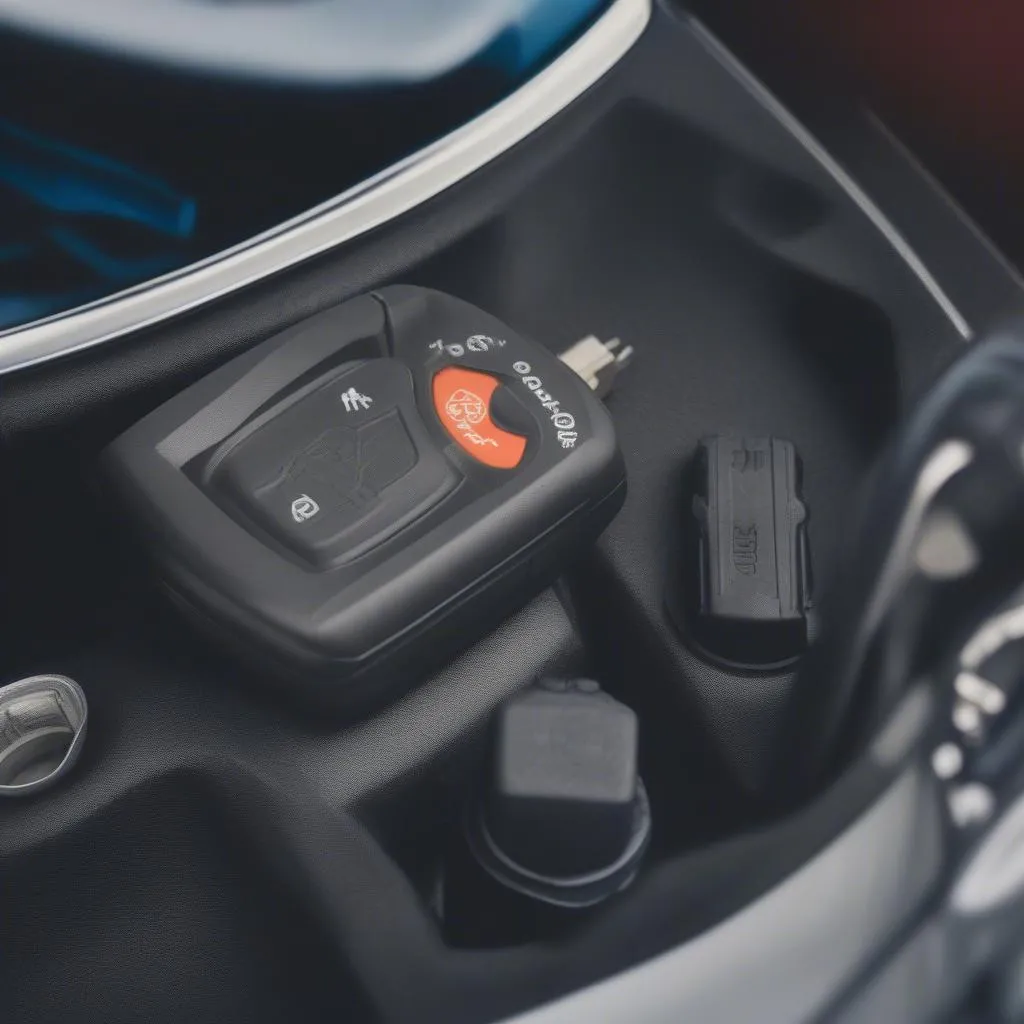The dreaded brake warning light. It’s enough to send shivers down any BMW owner’s spine. But before you start picturing worst-case scenarios and hefty repair bills, take a deep breath. A glowing brake warning light doesn’t always signify a catastrophic issue. Let’s explore the common reasons behind this warning light and guide you through some troubleshooting steps.
Understanding Your BMW’s Brake System and Warning Lights
Your BMW’s braking system is a complex network of components working together to ensure your safety. At its core, it uses hydraulic pressure to engage the brake pads, which then clamp down on the rotors, creating the friction needed to slow down or stop your vehicle. The brake warning light is your car’s way of telling you something isn’t quite right within this system.
It’s important to differentiate between the various brake-related warning lights on your BMW’s dashboard:
- Red Brake Warning Light: This light typically indicates a serious issue with your braking system, requiring immediate attention. It could signal a significant loss of brake fluid, a malfunctioning ABS system, or a complete brake system failure.
- Yellow Brake Warning Light: This light usually relates to your ABS (Anti-lock Braking System) or DSC (Dynamic Stability Control). While not as immediately critical as a red warning light, it still warrants attention as it indicates a potential safety concern.
- Parking Brake Light: This light illuminates when your parking brake is engaged. If it stays on after disengaging the parking brake, it may point to a problem with the switch or a sensor.
Why is My BMW Brake Warning Light On?
There are several reasons why your BMW’s brake warning light might illuminate:
-
Low Brake Fluid: One of the most common culprits is low brake fluid, often caused by worn brake pads or a leak in the system. Brake fluid is the lifeblood of your braking system, and low fluid levels can significantly compromise braking performance.
-
Worn Brake Pads: Brake pads have a finite lifespan. As you use your brakes, the friction material wears down. When the pads wear too thin, a sensor triggers the warning light, indicating it’s time for a replacement.
 Worn Brake Pads
Worn Brake Pads
-
Faulty Brake Sensors: BMWs use sensors to monitor brake pad wear and other aspects of the braking system. Over time, these sensors can malfunction, sending a false warning signal.
-
Brake Fluid Leak: A leak in your brake lines, calipers, or wheel cylinders can lead to a loss of brake fluid, triggering the warning light.
-
Air in the Brake Lines: Air in the brake lines can create a spongy brake pedal feel and reduce braking efficiency, potentially activating the warning light.
-
Master Cylinder Problems: The master cylinder plays a vital role in pressurizing the braking system. A malfunctioning master cylinder can lead to a loss of brake pressure and illuminate the warning light.
-
ABS or DSC Issues: As mentioned earlier, a yellow brake warning light could indicate a problem with your ABS or DSC system. This could be due to a faulty sensor, control module, or other related components.
What to Do When Your BMW Brake Warning Light Comes On
Safety First:
If the red brake warning light illuminates, it’s crucial to pull over to a safe location immediately. Driving with a serious brake issue can be extremely dangerous. Contact a qualified mechanic or towing service to diagnose and address the problem.
Troubleshooting Steps for a Yellow Warning Light:
If you see a yellow brake warning light, while not as urgent as a red light, it’s essential to investigate the issue promptly. Here are some steps you can take:
-
Check Your Parking Brake: Ensure the parking brake is fully released. Sometimes, a simple oversight can be the culprit.
-
Inspect Brake Fluid Level: Locate the brake fluid reservoir under the hood (refer to your owner’s manual). Check the fluid level. If it’s low, add the appropriate brake fluid (DOT 3 or DOT 4 for most BMWs). Caution: Brake fluid is corrosive. Avoid contact with skin or paint.
-
Visually Inspect for Leaks: Examine the area around the brake master cylinder, brake lines, and near the wheels for any signs of fluid leaks. Look for wet spots or drips.
-
Consult a Mechanic: If the warning light persists or you suspect a more serious issue, it’s best to seek professional assistance. A qualified mechanic can diagnose the problem using specialized tools and address it safely and effectively.
Remote Diagnostics and Software Solutions: The Future of BMW Repair
In today’s digitally connected world, even car repairs are getting a technological upgrade. Remote diagnostics and software solutions are becoming increasingly common, offering convenient and efficient ways to identify and address issues with your BMW’s braking system.
Here’s how it works:
Specialized software can interface with your BMW’s onboard computer system, reading error codes and analyzing data from various sensors. This data can be transmitted remotely to trained technicians who can then diagnose the problem without physically inspecting the vehicle.
Benefits of Remote Diagnostics:
- Faster Diagnosis: Remote diagnostics can significantly reduce the time it takes to identify the root cause of a problem.
- Convenience: You don’t have to drive to a mechanic’s shop and wait for an inspection.
- Potential Cost Savings: Early detection and diagnosis through remote methods can prevent minor issues from escalating into costly repairs.
- Software Updates and Programming: In some cases, brake-related issues can be resolved remotely through software updates or programming adjustments.
“Remote diagnostics and software solutions are revolutionizing the way we diagnose and repair BMWs,” says Alex Miller, a senior automotive engineer specializing in remote diagnostics. “These technologies allow us to pinpoint issues with greater accuracy and often provide solutions without the need for a physical visit to the shop.”
Preventing Future Brake Warning Light Issues
While some brake problems are unavoidable due to wear and tear, proactive maintenance can go a long way in preventing future brake warning light headaches:
- Regular Brake Inspections: Adhere to your BMW’s recommended maintenance schedule for brake inspections. Regular inspections allow mechanics to identify and address minor issues before they escalate.
- Timely Brake Pad Replacements: Don’t ignore the signs of worn brake pads. Squealing or grinding noises when braking, a vibrating brake pedal, or a longer stopping distance can all indicate the need for new pads.
- Quality Brake Fluid: Use high-quality brake fluid and have it flushed and replaced as recommended by BMW.
- Address Leaks Promptly: If you notice any signs of brake fluid leaks, address them immediately to prevent further damage and safety hazards.
Conclusion
A glowing brake warning light in your BMW doesn’t have to spell disaster. By understanding the potential causes and following the troubleshooting steps outlined above, you can take control of the situation. Remember, when it comes to your safety and the performance of your BMW, it’s always best to err on the side of caution and seek professional help when needed. Embrace the advancements in remote diagnostics and software solutions to experience a new level of convenience and efficiency in BMW repair.


